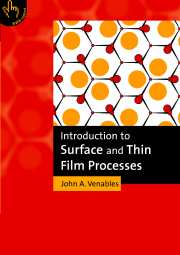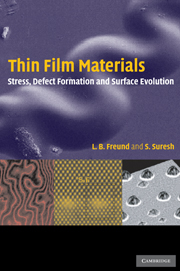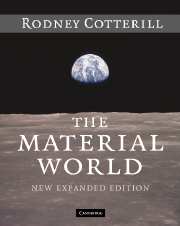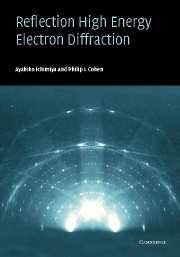Refine search
Actions for selected content:
106069 results in Materials Science
13 - Critical stress state analysis of beams
- from Part II - Prestressed concrete
-
- Book:
- Reinforced and Prestressed Concrete
- Published online:
- 05 June 2012
- Print publication:
- 29 July 2010, pp 329-347
-
- Chapter
- Export citation
3 - Ultimate strength analysis and design for bending
- from Part I - Reinforced concrete
-
- Book:
- Reinforced and Prestressed Concrete
- Published online:
- 05 June 2012
- Print publication:
- 29 July 2010, pp 18-73
-
- Chapter
- Export citation
Appendix C - Development of an integrated package for design of reinforced concrete flat plates on personal computer
-
- Book:
- Reinforced and Prestressed Concrete
- Published online:
- 05 June 2012
- Print publication:
- 29 July 2010, pp 391-397
-
- Chapter
- Export citation
Part I - Reinforced concrete
-
- Book:
- Reinforced and Prestressed Concrete
- Published online:
- 05 June 2012
- Print publication:
- 29 July 2010, pp 1-2
-
- Chapter
- Export citation

Introduction to Surface and Thin Film Processes
-
- Published online:
- 06 July 2010
- Print publication:
- 31 August 2000

Thin Film Materials
- Stress, Defect Formation and Surface Evolution
-
- Published online:
- 06 July 2010
- Print publication:
- 08 January 2004

Surface Diffusion
- Metals, Metal Atoms, and Clusters
-
- Published online:
- 06 July 2010
- Print publication:
- 10 June 2010

The Material World
-
- Published online:
- 06 July 2010
- Print publication:
- 18 September 2008

Reflection High-Energy Electron Diffraction
-
- Published online:
- 06 July 2010
- Print publication:
- 13 December 2004
Two novel A4B3O12-type microwave ceramics with high-Q and near-zero τf
-
- Journal:
- Journal of Materials Research / Volume 25 / Issue 7 / July 2010
- Published online by Cambridge University Press:
- 31 January 2011, pp. 1239-1242
- Print publication:
- July 2010
-
- Article
- Export citation
Method Developed for Producing Chitosan Nanoparticles Using Nanoporous Membranes
-
- Journal:
- MRS Bulletin / Volume 35 / Issue 7 / July 2010
- Published online by Cambridge University Press:
- 31 January 2011, pp. 488-489
- Print publication:
- July 2010
-
- Article
-
- You have access
- Export citation
Correlation between microstructural evolution during high-pressure torsion and isothermal heat treatment of amorphous Al85Gd8Ni5Co2 alloy
-
- Journal:
- Journal of Materials Research / Volume 25 / Issue 7 / July 2010
- Published online by Cambridge University Press:
- 31 January 2011, pp. 1388-1397
- Print publication:
- July 2010
-
- Article
- Export citation
The anisotropic morphology of silver particles in Y-123/Y-24Nb1/Ag nanocomposite bulk high-temperature superconductors
-
- Journal:
- Journal of Materials Research / Volume 25 / Issue 7 / July 2010
- Published online by Cambridge University Press:
- 31 January 2011, pp. 1243-1250
- Print publication:
- July 2010
-
- Article
- Export citation
Ferroelectric and proton conducting behavior of a new elpasolite-related vanadium oxyfluoride (NH4,K)3VO2F4
-
- Journal:
- Journal of Materials Research / Volume 25 / Issue 7 / July 2010
- Published online by Cambridge University Press:
- 31 January 2011, pp. 1251-1263
- Print publication:
- July 2010
-
- Article
- Export citation
Ties that Bind
-
- Journal:
- MRS Bulletin / Volume 35 / Issue 7 / July 2010
- Published online by Cambridge University Press:
- 31 January 2011, p. 560
- Print publication:
- July 2010
-
- Article
-
- You have access
- Export citation
2010 MRS Spring Meeting Reveals Integration of Various Materials Developments
-
- Journal:
- MRS Bulletin / Volume 35 / Issue 7 / July 2010
- Published online by Cambridge University Press:
- 31 January 2011, pp. 542-551
- Print publication:
- July 2010
-
- Article
-
- You have access
- Export citation
Electrospun carbon nanofiber-supported Pt–Pd alloy composites for oxygen reduction
-
- Journal:
- Journal of Materials Research / Volume 25 / Issue 7 / July 2010
- Published online by Cambridge University Press:
- 31 January 2011, pp. 1329-1335
- Print publication:
- July 2010
-
- Article
- Export citation
Recent advances and challenges in electroplastic manufacturing processing of metals
-
- Journal:
- Journal of Materials Research / Volume 25 / Issue 7 / July 2010
- Published online by Cambridge University Press:
- 31 January 2011, pp. 1215-1224
- Print publication:
- July 2010
-
- Article
- Export citation
Self-Assembled Collagen-Apatite Matrix Exhibits Bone-like Hierarchy
-
- Journal:
- MRS Bulletin / Volume 35 / Issue 7 / July 2010
- Published online by Cambridge University Press:
- 31 January 2011, p. 485
- Print publication:
- July 2010
-
- Article
-
- You have access
- Export citation
Functionalized Silsesquioxanes Show High Sensitivity and Stability for Next-Generation E-Beam Lithography Resists
-
- Journal:
- MRS Bulletin / Volume 35 / Issue 7 / July 2010
- Published online by Cambridge University Press:
- 31 January 2011, p. 488
- Print publication:
- July 2010
-
- Article
-
- You have access
- Export citation
